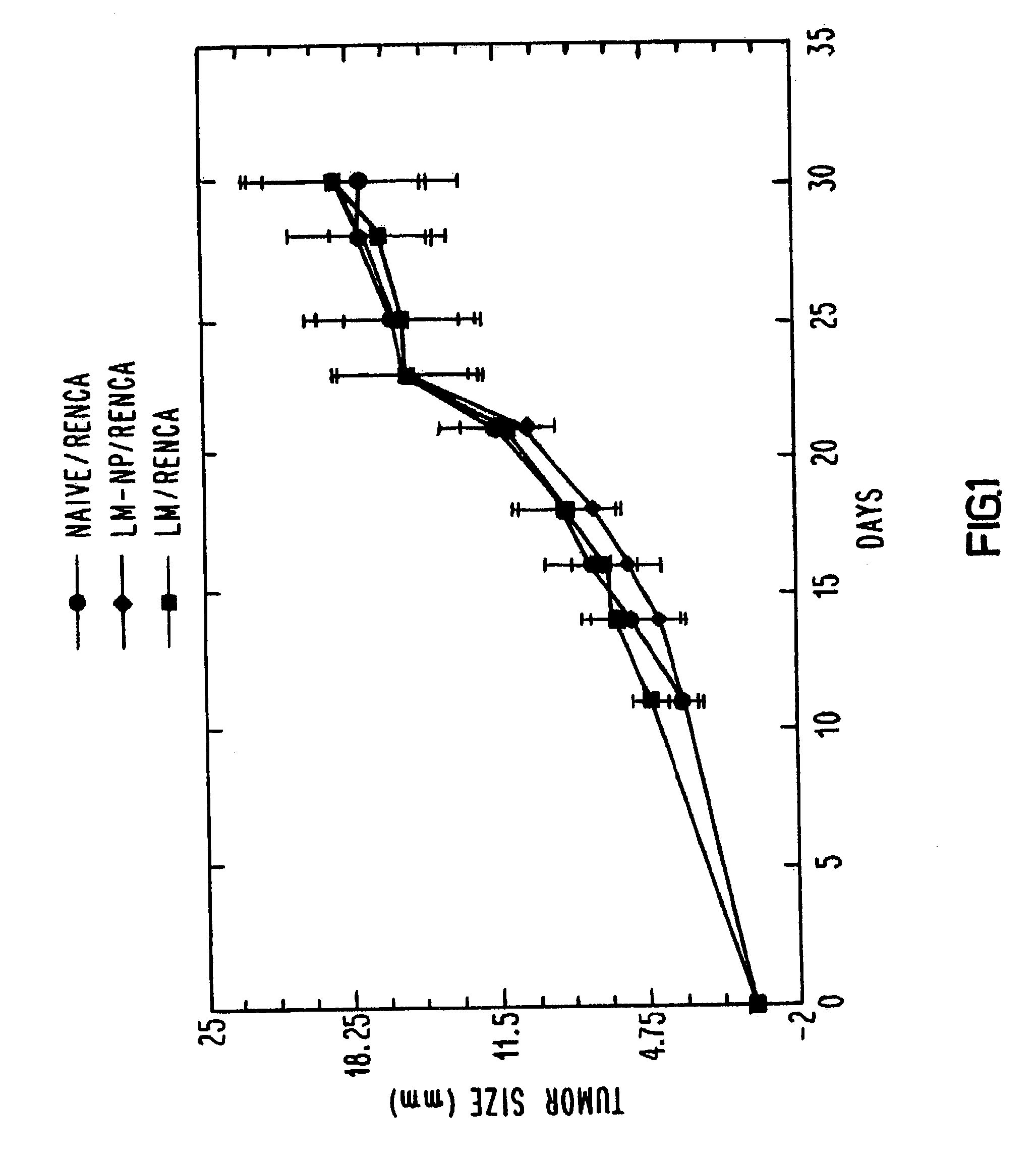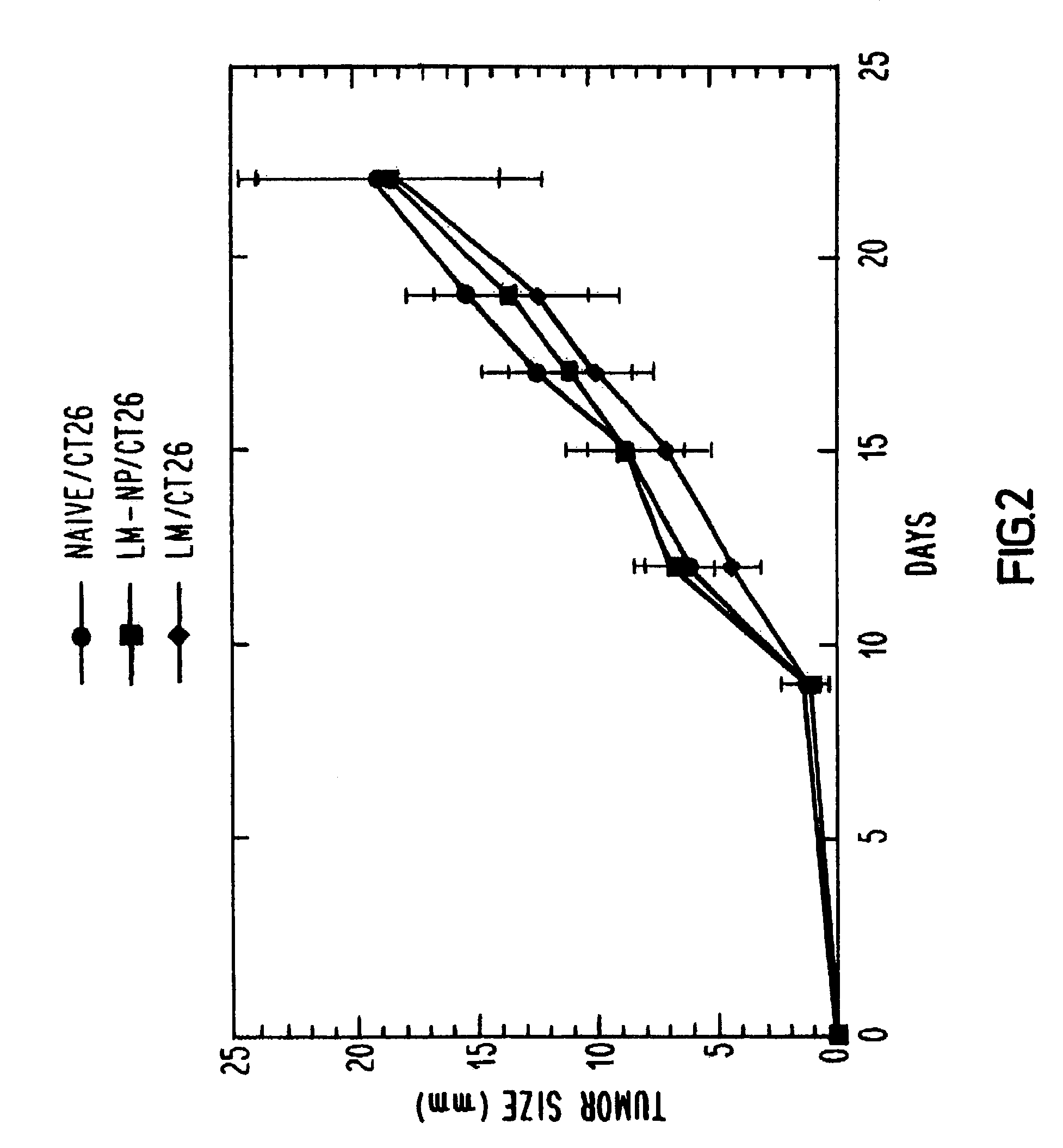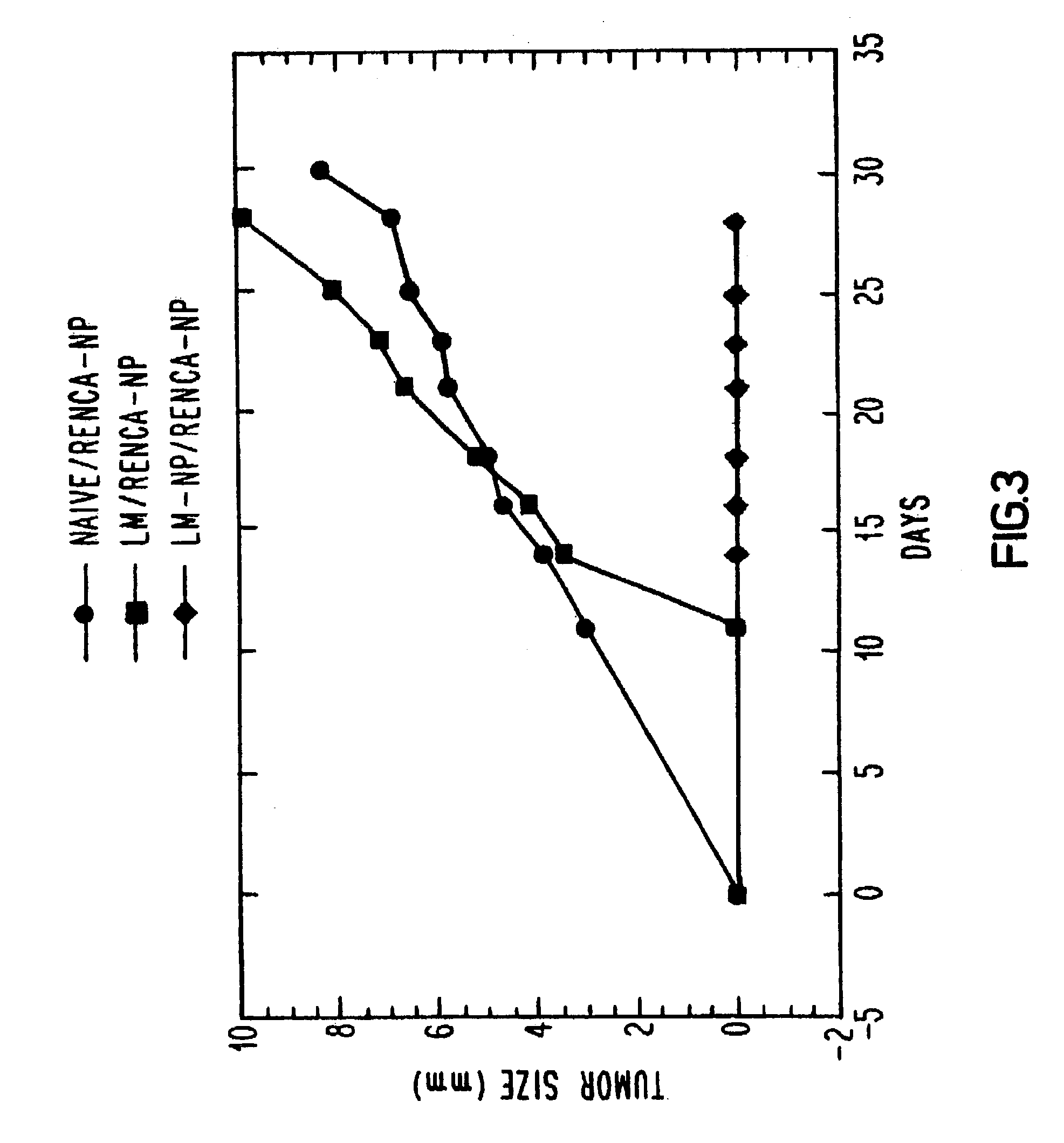Methods and compositions for immunotherapy of cancer
a technology of immunotherapy and compositions, applied in the field of methods and compositions for immunotherapy of cancer, can solve the problems of difficult demonstration of the effect of antitumor immune response, inability to induce sufficient t cells in vivo, and no other experiments reported, so as to suppress the formation of tumors
- Summary
- Abstract
- Description
- Claims
- Application Information
AI Technical Summary
Benefits of technology
Problems solved by technology
Method used
Image
Examples
example 1
[0041]A sequence encoding the first 420 amino acids of Listeriolysin O (LLO) and its promoter along with some upstream regulatory sequences was PCR amplified from L. monocytogenes chromosomal DNA (wild type strain 10403s) and ligated to PCR amplified DNA encoding NP, derived from plasmid pAPR502. (Young, J. F., U. Desselberger, P. Graves, P. Palese and A. Shatzman, “Cloning and Expression of influenza virus genes”, The Origin of Pandemic Influenza Viruses, W. G. Laver, eds., Elsevier, N.Y., 1983, p. 129). The construction resulted in an in-frame fusion plus the addition of two amino acids at the site of the fusion junction. The fusion was cloned into the shuttle plasmid pAM401, a shuttle vector able to replicate in both gram+ and gram− bacteria which contains a gram+ chloramphenicol resistance gene and a gram-chloramphenicol resistance gene (Wirth, R., F. Y. An and D. B. Clewell, J. Bacteriol. 1986, 165, 831). The resultant plasmid, pDP1659, was introduced into wild type L. monocyto...
example 2
Treatment of Mice with LM-NP
[0043]One hundred and twenty Balb / c mice were divided into three groups of 40. One group was immunized with one-tenth of an LD50 of wild-type L. monocytogenes, one group was immunized with sterile saline and the third group was immunized with a recombinant L. monocytogenes vector transformed to secrete influenza nucleoprotein fusion protein (LM-NP). After two weeks, each group received a similar booster immunization. This immunization schedule was determined to produce strong CTL responses against influenza nucleoprotein. Two weeks after the last immunization, animals in each group were challenged subcutaneously with either CT26 or RENCA which had been transfected with the same influenza nucleoprotein gene that was used to transform the L. monocytogenes vector (CT26-NP or RENCA-NP, respectively) or with the parental CT26 or RENCA line. Each mouse was administered 5×105 tumor cells, which is 50 times the tumoricidal dose. Tumor growth was monitored every t...
example 3
CTL Generated by Immunizing Balb / c Mice with LM-NP Can Kill Tumor Cells CT26 and RENCA that Express NP In Vitro
[0045]Mice were immunized with 0.1 LD50 of LM-NP. Two weeks later, the mice were sacrificed and primary cultures were set up of spleen cells with either influenza infected (A / PR8 / 34) splenocytes (FIG. 5A) or with a synthetic peptide 147–158 known to represent the immunodominant epitope of the NP protein (FIG. 5B). After four days in culture, the cytolytic activity of both populations was measured against CT26-NP, RENCA-NP and the parental cell lines CT26 and RENCA. A positive control was included (P815, a mastocytoma tumor cell line known to be efficiently lysed by H-2d restricted CTL in the presence of the peptide or when infected by A / PR8 / 34). As FIG. 5A shows, RENCA-NP and CT26-NP, but not the parental lines, were lysed by NP specific effectors induced by immunizing with LM-NP and expanded with A / PR8 / 34. In FIG. 5B, a similar experiment in which the effectors were expand...
PUM
| Property | Measurement | Unit |
|---|---|---|
| Immunogenicity | aaaaa | aaaaa |
Abstract
Description
Claims
Application Information
 Login to View More
Login to View More - R&D
- Intellectual Property
- Life Sciences
- Materials
- Tech Scout
- Unparalleled Data Quality
- Higher Quality Content
- 60% Fewer Hallucinations
Browse by: Latest US Patents, China's latest patents, Technical Efficacy Thesaurus, Application Domain, Technology Topic, Popular Technical Reports.
© 2025 PatSnap. All rights reserved.Legal|Privacy policy|Modern Slavery Act Transparency Statement|Sitemap|About US| Contact US: help@patsnap.com



